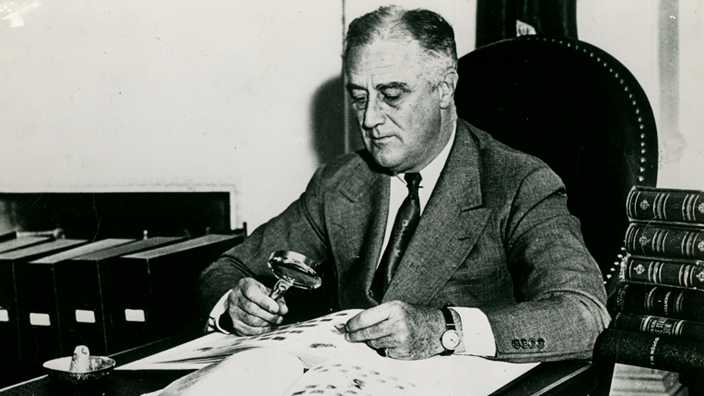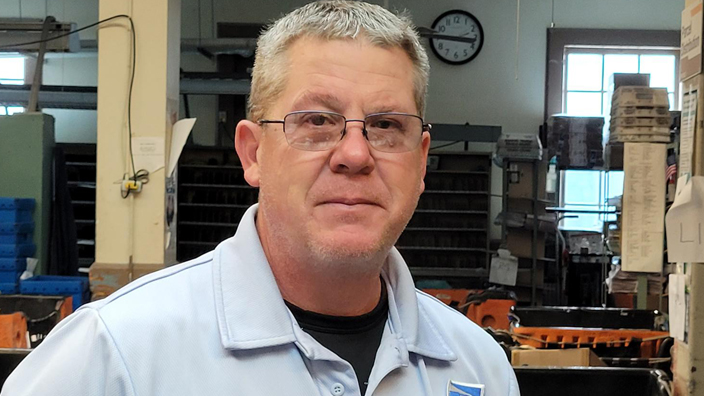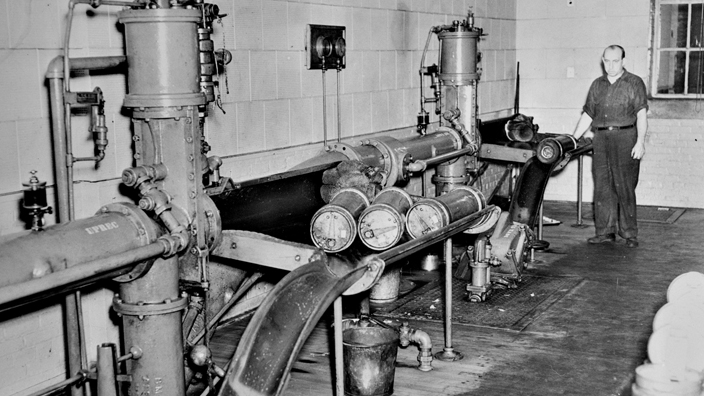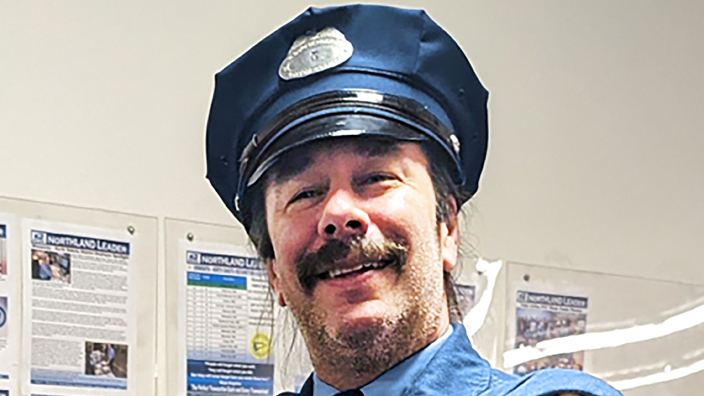
He gave philately presidential cachet
A lifelong collector, FDR even designed stamps during his time in the Oval Office
Franklin Delano Roosevelt not only put his stamp on world history — he put it on the world of stamps, too.
The 32nd president began collecting stamps around age 8 and his interest never waned.
As a child, stamps helped him learn about geography and foreign leaders. When he contracted polio at age 39, his collection kept him occupied as he recuperated.
“I owe my life to my hobbies — especially stamp collecting,” Roosevelt once said.
And during his historic three-plus terms in the White House, philately helped him wind down from the rigors of his day.
“Taking a pile of stamps that are in total chaos and putting them in order was a very relaxing thing for him to do,” Cheryl Ganz, chief curator of philately for the National Postal Museum, says in “Stamp Collector in Chief,” a video by the Smithsonian Institution.
“Here we had a man taking the world in chaos because of the Depression, because of the war, and able to put it in order as well.”
FDR named longtime political ally James Farley as postmaster general and worked closely with him on stamp design. Roosevelt suggested subjects, refined and corrected sketches, and even designed a few himself.
The president also saw stamps as a savvy marketing tool.
“He used his postage stamps to help sell his New Deal programs,” Ganz said. The aim was “to give a positive message of hope and optimism to the people.”
At the urging of Interior Secretary Harold Ickes, Roosevelt approved a series of national parks postage stamps in 1934 to help boost tourism.
FDR’s enthusiasm for the hobby was contagious.
“Stamp collecting never had a higher profile than when we had a philatelist in the White House,” said Stephen Kochersperger, acting USPS historian. “Newspapers regularly featured columns on philately, and there were even radio shows about stamp collecting.”
After his death, Roosevelt’s stamp collection was sold at public auction per his wishes. The realized amount — $228,000 — was far more than the stamps’ appraised value.
In 1945, the year he died, FDR was inducted into the American Philatelic Society’s Hall of Fame.

From store to floor
This carrier tended to an injured customer — and put away her groceries, too
Letter Carrier Jeffrey Sparks was delivering mail recently in El Dorado, KS, when he saw an older customer lying on the floor of a home’s garage.
Sparks approached the woman, who had fallen while trying to retrieve groceries from her car.
The Postal Service employee offered to call 911, but the customer declined because she had already contacted her daughter — a nurse who lives close by and was on the way.
Sparks stayed with the woman until her daughter arrived. While they waited, he fetched a blanket to keep the customer warm, and he put away her groceries.
Sparks later received a letter from the daughter, who told him her mother fractured her hip and would soon have surgery for it. She also thanked Sparks for the care he provided.
Employees featured in “Heroes” receive letters of commendation through the Postmaster General Heroes’ Program. The nomination form is available on Blue.

A pipe dream realized
The first postal pneumatic tube system debuted in Philadelphia in 1893
Throughout its history, the nation’s postal system has strived to find faster, more efficient ways to deliver mail.
On Feb. 17, 1893, those efforts went underground when a pneumatic tube system for U.S. Mail was tested in Philadelphia.
Pneumatic systems employ compressed air to transport items in sturdy cylindrical canisters through a series of pipes.
Postmaster General John Wanamaker — founder of the Philadelphia-based department stores bearing his surname — advocated for their adoption, having successfully employed a pneumatic system at his flagship store.
When the day came, members of Philadelphia’s business elite gathered at the city’s General Post Office at Ninth and Chestnut streets. Wanamaker placed a Bible and U.S. flag in a canister and sent it on its way.
One minute and three seconds later, the canister arrived at the East Chestnut Street Station at Third and Chestnut streets, according to a Feb. 18, 1893, article in The Philadelphia Times.
That initial trip was followed by such cargo as newspapers, a loaf of bread, a length of walking cane, a shirt, a pair of shoes, a gold watch and “handsome bouquets of flowers” for Wanamaker and Philadelphia Postmaster John Field.
Later, New York City, Boston, Chicago and St. Louis deployed their own pneumatic systems.
Some dreamers imagined the tubes eventually linking every address in the nation, but the systems proved costly, and with the automobile age in the ascendant, their use for transporting mail was phased out over time.
However, they are still widely in use today at banks, hospitals and department stores.
Robert A. Cohen, author of a 1999 history of New York City’s pneumatic tube system, lamented the system’s demise.
“If it had not been dismantled and it was resurrected today, I think the tube system would be able to provide a remarkably quick, citywide Express Mail service that no private concern would be able to compete with effectively,” he wrote.
The “History” column appears occasionally in Link.

Old-school cool
A letter carrier dons a vintage uniform and a rural carrier associate gets a Facebook shoutout
Like all good teachers, Ben Noble knows how to bring history to life for his students.
The Minneapolis letter carrier, who helps train newly hired carriers, dons a 1980s USPS uniform when leading one of his classes.
The uniform, which Noble pieced together through donations from colleagues, helps prompt questions about the Postal Service and its history, as well as opportunities for advancement within the organization.
“We talk about prior skill sets and the many places where they can go,” he said.
Noble, who has been an instructor for about a year, said he feels “blessed” to be able to help new carriers learn the ropes.
“I absolutely love this job and the uniform helps me celebrate that,” he said.
Snow problem — at all
After a heavy snowfall in Corryton, TN, last month, a customer’s home security camera captured a USPS employee braving the elements to deliver a package to her doorstep.
The customer, Jennifer Buchanan, later took to Facebook to praise the employee.
“I don’t know who the mailman is [but he] literally parked all the way at the end of our driveway and walked my packages all the way to the back door … that is not a short walk at all and it’s so appreciated,” she wrote.
It turns out the employee is Gerald Pittman, a rural carrier associate.
“Gerald is an excellent employee, and we are so proud of his work and commitment to serve our customers,” said Corryton Postmaster Midge Stephens.
“People” appears regularly in Link. Got news to share? Email us.
Facilities must report threshold quantities of toxic chemicals
Postal Service facilities that store certain quantities of hazardous chemicals must complete and submit the Emergency Planning and Community Right-to-Know Act (EPCRA) Tier II form by March 1 each year.
Reporting requirements apply to any location that stores threshold quantities of EPCRA-regulated chemicals, such as sulfuric acid in lead-acid and gel cell batteries; gasoline; diesel fuel; heating oil; propane; and ice melt/anti-skid products.
In most cases, the federal reporting threshold is 10,000 pounds.
USPS facilities that exceed this threshold must complete and submit an EPCRA Tier II form to notify state and local emergency response agencies about the potential hazards on site.
The Tier II Reporting Environmental Compliance Bulletin, available on the Environmental Affairs Blue page, has more information.
View past printouts
Printout details
What's included
-

He gave philately presidential cachet
A lifelong collector, FDR even designed stamps during his time in the Oval Office
-
 Heroes
HeroesFrom store to floor
This carrier tended to an injured customer — and put away her groceries, too
-
 History
HistoryA pipe dream realized
The first postal pneumatic tube system debuted in Philadelphia in 1893
-
 People
PeopleOld-school cool
A letter carrier dons a vintage uniform and a rural carrier associate gets a Facebook shoutout
-
Brief
Facilities must report threshold quantities of toxic chemicals